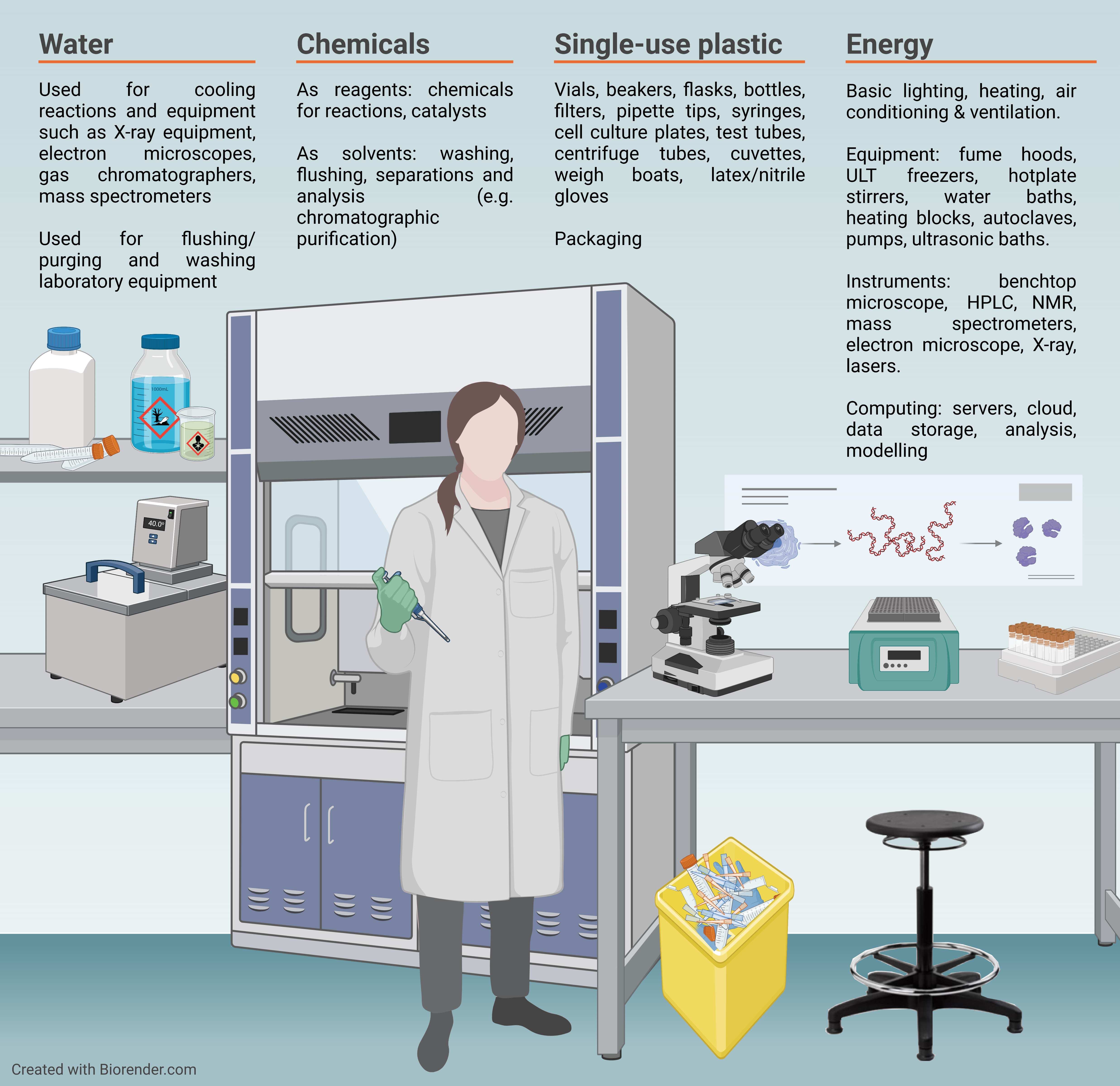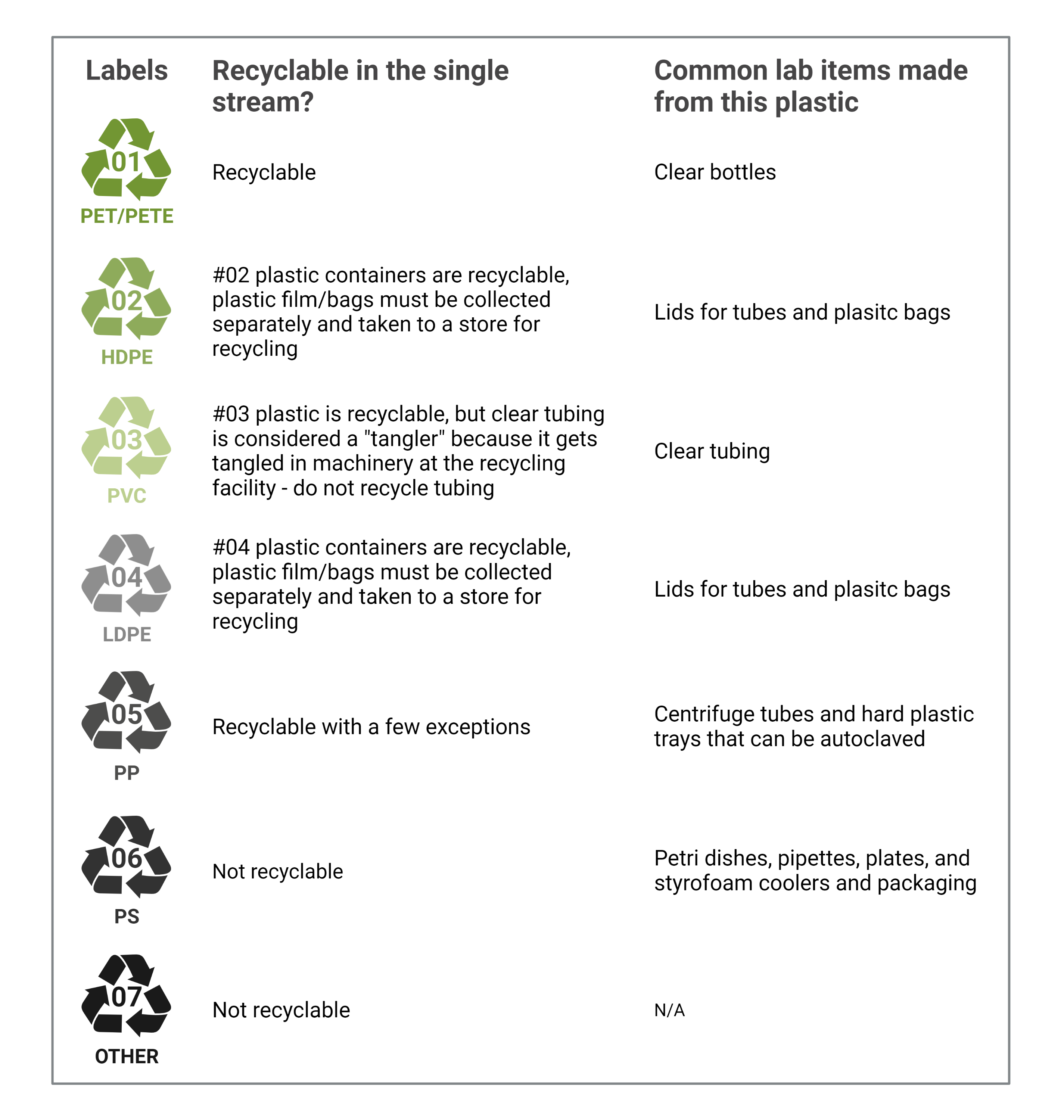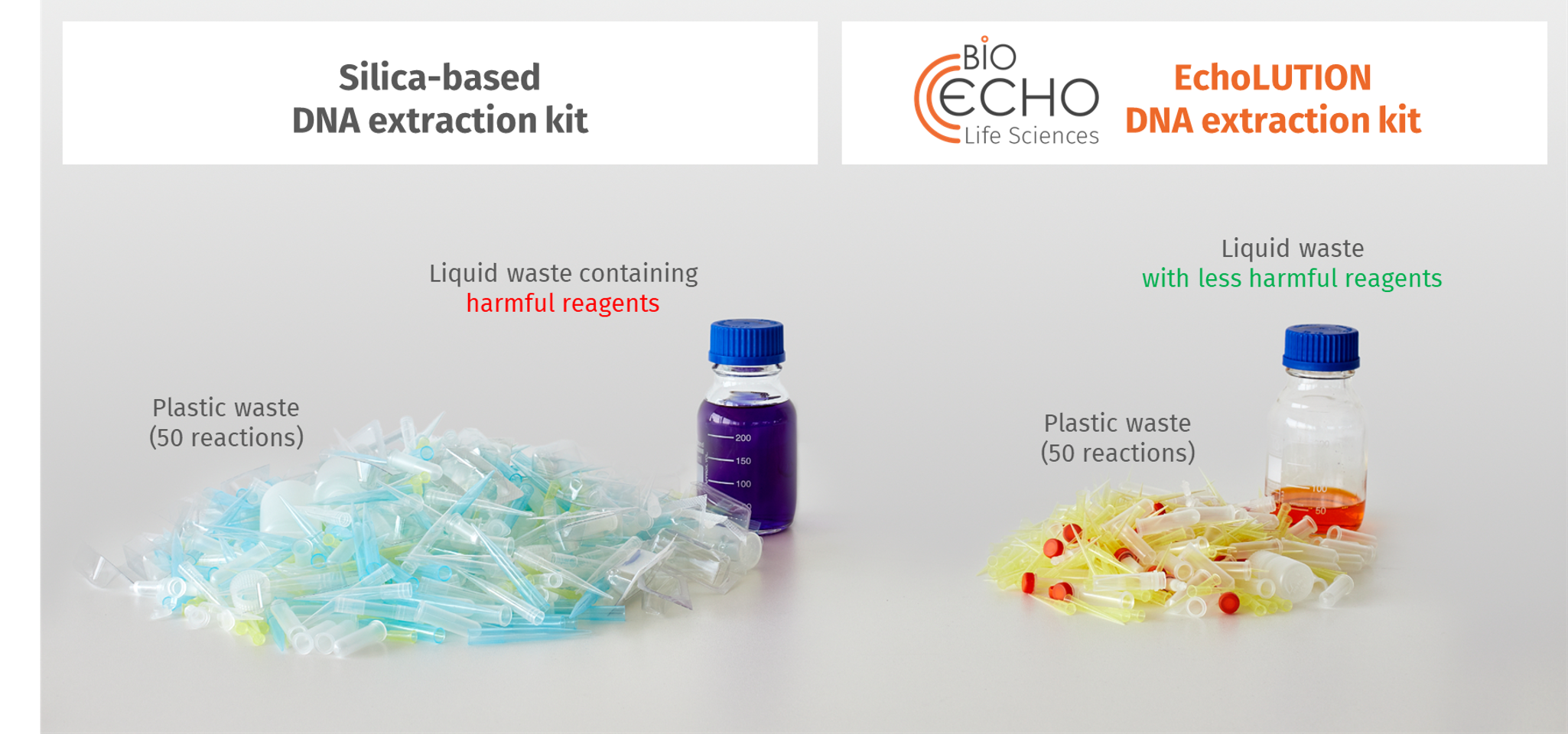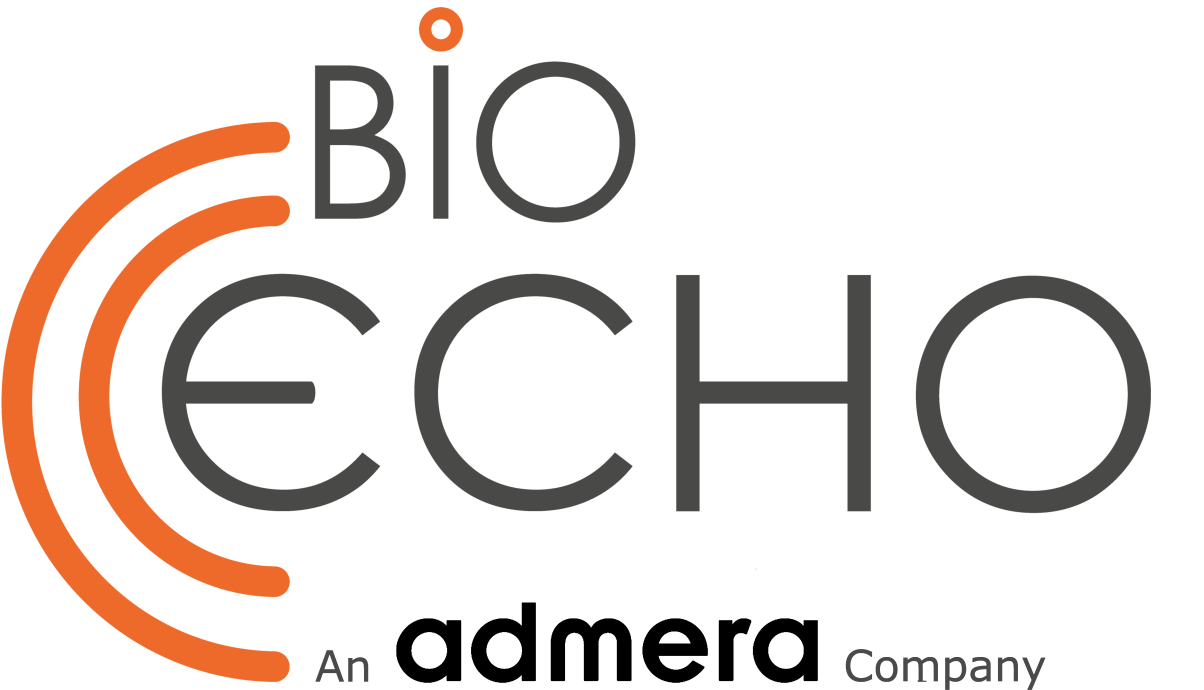Go Green: Sustainability in Laboratories

This article analyzes the environmental impact of laboratories. The importance of changing some daily habits in molecular biology to introduce responsible and sustainable practices to reduce our ecological footprint.
Climate change, air pollution, waste accumulation, and water scarcity are among the most pressing global problems. The way we buy, what we buy, how we travel, work, or spend our free time - all determines the amount of our ecological footprint. Every facet of society needs to change, and the activities of laboratories have a significant and often overlooked environmental impact. Have you ever thought about the energy laboratories need to maintain their equipment and facilities? Are you aware of the chemical and reagent waste they generate and how hazardous those often are? Have you ever realized how many tips and tubes you use during your daily laboratory activities? The scientific community starts to sensitize, and many laboratories have established sustainability programs that aim to minimize the ecological footprint of research. The article analyzes the environmental impacts of laboratories and will discuss about practical solutions to introduce sustainability in your daily activities.
Environmental impact of scientific research
Laboratory buildings, processes, and equipment can be resource and energy intensive as safely carrying out high-quality research can require temperature control, ventilation, or high sterility. Beyond that, laboratory consumables and instruments all have an environmental footprint during their sourcing, manufacturing, and disposal. Life science research frequently relies on high energy use, water consumption, single use plastics, reagents, and solvents (Figure 1).

Figure 1. Sources of environmental impact in life science laboratories.
A study performed in 2021 provided data about the median energy usage of laboratories being almost three times that of an equally sized office (1). An analysis of London’s university buildings found that laboratories and workshops had the highest heating and electricity consumption, approximately double compared to teaching and administration spaces (2). Among the equipment that a ‘typical’ laboratory contains, fume hoods and ultra-low-temperature (ULT) freezers are among the most energy intensive. [MAM1] Indeed, a single ULT freezer consumes nearly as much electricity each year as an average household. In addition, they are responsible for a considerable amount of greenhouse gas emissions.
Moreover, water consumption is highest for research-intensive laboratories, since it is used for different purposes, such as cooling or washing. Autoclaves are, for instance, critical pieces of lab equipment, but they are also large consumers of energy and water. An autoclave uses an average of 170 liters of water per cycle and 16,000 kWh of energy per year (nearly 1.5 times the energy use of an entire house).
Besides, laboratories frequently require the use of chemicals and other hazardous materials for experiments. It is critical to follow all storage and use recommendations from Environmental Health & Safety (EHS) when using these substances. Chemicals do not only have a carbon footprint and human health impacts, but can also result in the pollution of air, water, and soil.
In many research laboratories, single-use plastics constitute a source of material consumption and environmental impact. Single-use plastics are frequently used to conduct cell culture experiments or when sterility is required. According to a study from the University of Exeter in the UK, organizations engaged in biological, medical, or agricultural research globally generate roughly 5.5 million tons of plastic trash per year, or about 2 % of the world's total plastic garbage (3). In addition, a large amount of plastic waste produced by science labs goes straight to landfill every year as most recycling plants do not accept them due to potential health and safety risks or because of missing knowledge about recycling possibilities.
Nevertheless, it exists a tendency for researchers and
industry to look for alternatives that aim to cut-off or at least considerably
reduce single-use plastic material.
Green labs guide
Figure 1. Sources of environmental impact in life science laboratories.

Introducing sustainability to molecular biology with BioEcho
Frequently, a resistance to change
is common in molecular biology and when someone suggests reducing your
waste, the initial reactions are prone to be mixed. Often, the perception of
implementing certain habits is not straightforward, which leads them to justify
the use of disposables in the lab on the grounds of costs and time saved. We
could finger scientist not being more responsible of reducing their
environmental footprint, but what about manufacturers of laboratory equipment,
reagents, and consumables? They should strive to supply environmentally
friendly alternatives to their customers and integrate sustainability into
their business practices. Nucleic acid extraction is a routine process applied
in many different areas such as clinical diagnostics, plant and animal
breeding, veterinary research, biopharmaceutical R&D, and academic
research. For decades, the procedure to obtain the genetic material has lain in
silica-based extraction methods. Those include several binding and washing
steps which need a considerable amount of pipette tips, tubes and, in many
cases, produce harmful reagent waste.
BioEcho Life Sciences has developed a unique solution: the EchoLUTION technology for nucleic acid extraction, which enables not only easier and faster workflows, but drastically reduces the amount of plastic waste and hazardous reagents needed during the isolation protocols (Figure 2). The technology consists of a gentle lysis step in aqueous buffers, resulting in a high extraction efficiency. The lysate is simply transferred onto the spin column or plate, nucleic acids pass through the purification matrix without interaction while impurities are held back by the purification matrix and are thereby removed. This happens within a one-minute centrifugation step and the result is a ready-to-use nucleic acid for more sensitive and reliable downstream applications. The simplicity of the process directly leads to the fact that less plastic is used.
BioEcho Life Science has a
consequent and holistic concept of sustainable nucleic acid purification
products. The company is committed to encourage ecological responsibility by
proving that plastic waste can be reduced, packing materials can be recyclable,
and the use of hazardous materials can be minimized.

Figure 2. Comparison of the plastic and liquid waste generated with an EchoLUTION DNA extraction kit and a corresponding silica-based kit. 50 DNA extractions each were performed according to the supplier’s protocols. BioEcho EchoLUTION kit results in up to 70 % less plastic waste when compared with the bind-wash-elute kit. In addition, fewer toxic reagents are included in the EchoLUTION DNA extraction kits.
Take home message
Research and laboratory work serves a higher purpose in our society, for example, provides better methods for diagnosing, preventing, and treating diseases. However, their environmental impact should not be ignored or excused. Researchers have become aware of the effect of their activities having a global influence on the biosphere, which is an important first step
Involve yourself and be active! There are many practices you can implement on your daily activities to reduce environmental footprint. If you see all the different approaches at once, it might be overwhelming, but just start with some things until they become a routine and then continue from there. Even small changes sum up!
Don’t be afraid of new approaches and protocols! Look for more sustainable alternatives. It is time, not only for laboratory workers to act responsibly, but for biotechnology companies and manufacturers to contribute to the mitigation of the environmental impact.
BioEcho Life Sciences proves that
modern molecular biology can be both sustainable and innovative. Further, we see
sustainability as a holistic approach, not only offering greener products, but
living sustainability in every aspect of our business.
If you like to know more about our sustainable products, business practices, and company initiatives visit Sustainability (bioecho.com) and explore our Sustainability Brochure, at the end of the page.
References
1. Energy Star Portfolio Manager, Technical Reference, US Energy Use Intensity by Property Type, 2021https://portfoliomanager.energystar.gov/pdf/reference/US%20National%20Median%20Table.pdf
2. Hawkins, D., Hong, S. M., Raslan, R., Mumovic, D., and Hanna, S., ‘Determinants of energy use in UK higher education buildings using statistical and artificial neural network methods’, International
3. Urbina, M., Watts, A. & Reardon, E. Labs should cut plastic waste too. Nature 528, 479 (2015)
4. Green Labs Resources | Sustainability | Washington University in St. Louis (wustl.edu)

